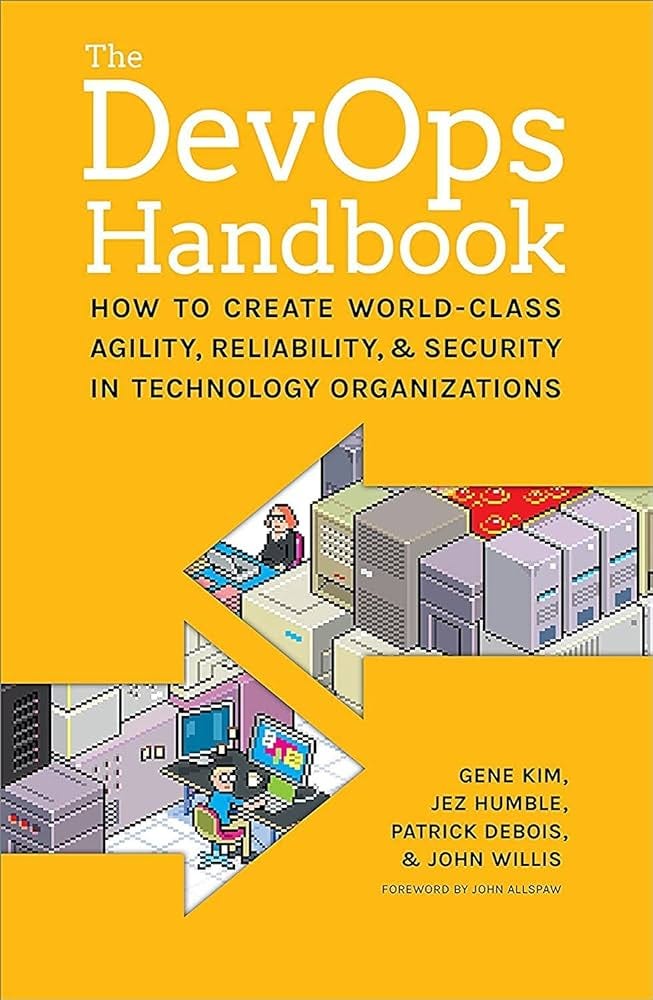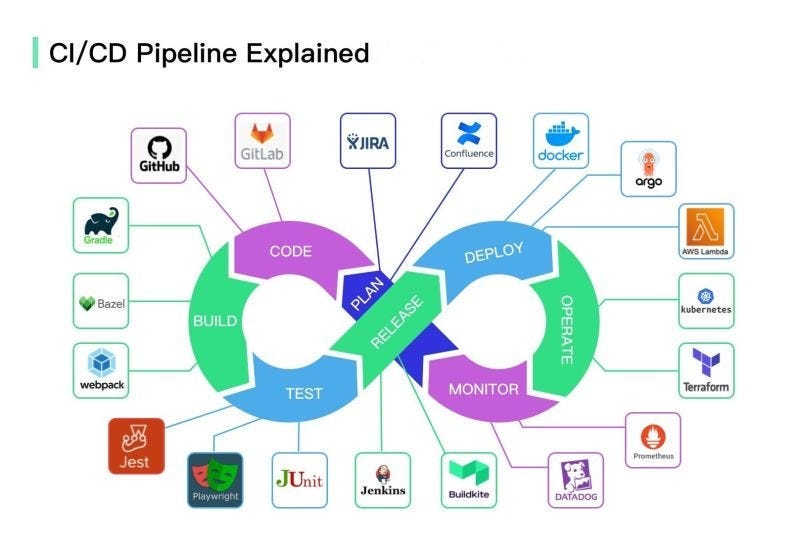4 min to read
Devops HandBook Book Review
DevOps Handbook offers a glimpse of how tech giants transformed their development and operations into a completely different level

When I first started my tech journey mainly working for some startups building embedded systems and devices for their market, I had buried my hand under a truly transforming market with growing colloboration in different sections of their IT infrastructure. I was aware of the downward spiral that emerge whendevelopment and operations are not in line with the organizational goals. I somewhat knew that Version Control Systems and Testing procedures help teams collaborate better and deliver faster. However, CI/CD pipelines, Infrastructure as Code, and the whole DevOps culture were still a mystery to me. Development and Operations teams were still working in silos, and the idea of DevOps was just a buzzword that I had heard but never fully understood. Deployment was still a manual process, and the concept of continuous integration and delivery was not yet a reality in my work environment. The book gives many examples of how big tech companies like Google, Amazon, and Facebook have transformed their development and operations processes to achieve unprecedented levels of efficiency and reliability. It also highlights the importance of collaboration between development and operations teams, which is a key aspect of the DevOps culture. Continuous Integration corporates the practice of merging code changes into a shared repository frequently, which helps to detect and fix issues early in the development process. Continuous Delivery extends this concept by automating the deployment process, allowing teams to release software more frequently and with less risk. Infrastructure as Code allows teams to manage their infrastructure using code, which makes it easier to automate and scale their systems.

The book also emphasizes the importance of monitoring and feedback loops in the DevOps culture. By continuously monitoring their systems and gathering feedback from users, teams can quickly identify and address issues, leading to a more reliable and efficient software delivery process. Production telemetry is a key aspect of this process, as it allows teams to gather data on how their systems are performing in real-time. The book also discusses the importance of security in the DevOps culture. By integrating security practices into the development and operations processes, teams can ensure that their systems are secure and compliant with industry standards. This is especially important in today’s world, where cyber threats are becoming increasingly sophisticated and prevalent. Overall, the DevOps Handbook provides a comprehensive overview of the DevOps culture and its key practices. It offers practical advice and real-world examples of how organizations can implement DevOps practices to achieve better software delivery outcomes. Whether you are new to DevOps or looking to improve your existing practices, this book is a valuable resource that can help you transform your development and operations processes. For someone like me who is not a practical in DevOps ecosystem, the book is a great starting point to understand the principles and practices of DevOps. It provides a clear and concise overview of the key concepts and practices, making it easy to understand and apply in real-world scenarios. The book is well-written and easy to read, with practical examples and case studies that illustrate the concepts being discussed. It is a must-read for anyone looking to improve their software delivery processes and achieve better outcomes in their development and operations teams.
The book also describes about the Lean Management principles and how they can be applied to the DevOps culture. Lean Management focuses on eliminating waste and improving efficiency in processes, which is a key aspect of the DevOps culture. By applying Lean principles to their development and operations processes, teams can achieve better outcomes and deliver software more efficiently. The book also discusses the importance of leadership in the DevOps culture. Leaders play a crucial role in creating a culture of collaboration and continuous improvement, which is essential for the success of DevOps practices. By fostering a culture of trust and transparency, leaders can help their teams achieve better outcomes and deliver software more efficiently. In conclusion, the DevOps Handbook is a valuable resource for anyone looking to improve their software delivery processes and achieve better outcomes in their development and operations teams.It describes the Concept of Andon which is a Japanese term that refers to a visual signal used to indicate a problem or issue in a process. In the context of DevOps, Andon can be used to quickly identify and address issues in the development and operations processes, leading to a more efficient and reliable software delivery process. The book also discusses the importance of continuous learning and improvement in the DevOps culture. By continuously learning from their experiences and gathering feedback from users, teams can improve their processes and deliver better software outcomes. This is especially important in today’s fast-paced and ever-changing technology landscape, where organizations need to be agile and adaptable to stay competitive. Also it gives insight into decreasing InfoSec risks by integrating security practices into the DevOps culture. By incorporating security practices into the development and operations processes, teams can ensure that their systems are secure and compliant with industry standards. Overall, the DevOps Handbook is a must-read for anyone looking to improve their software delivery processes and achieve better outcomes in their development and operations teams. It provides practical advice and real-world examples of how organizations can implement DevOps practices to achieve better software delivery outcomes.


Comments